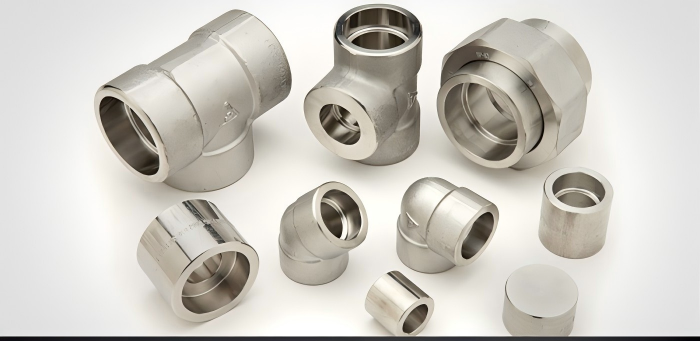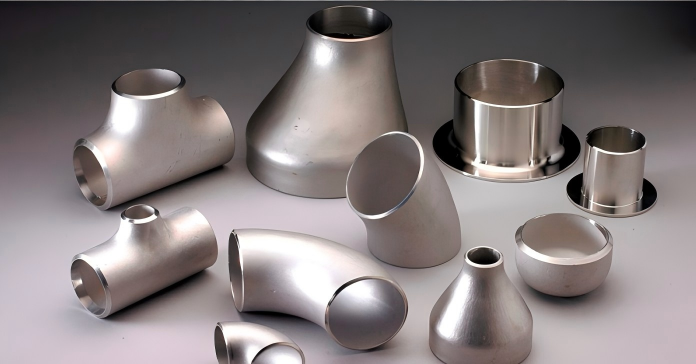When it comes to pipe flanges, fittings, and valves, two of the most prevalent connection types are socket welds and butt welds. While both serve to join sections of pipe, they have distinct characteristics, advantages, and disadvantages that make them suitable for different applications. Understanding these differences is crucial for selecting the best option for your construction projects.
Socket Weld:
Socket weld fittings, specified by ASME B16.11, involve inserting a pipe into a recessed area of a fitting. Both the pipe and the fitting have square-cut ends, eliminating the need for beveled ends or extensive preparation beyond cleaning the exterior. This straightforward design simplifies the welding and installation process. In a socket weld, two pieces of pipe of different sizes are used, with the smaller one fitting inside the larger one. The weld is then applied around the exterior of the larger pipe.

Key Features of Socket Welds:
Easy Installation: The design of socket weld fittings allows for easy alignment and installation. Since the pipe sits in a socket, temporary tack welding for alignment isn’t necessary.
Expansion Gap: A gap of approximately 1/16 inch must be left at the bottom of the socket to accommodate thermal expansion. However, this gap can become a stress point, potentially leading to cracks in the fillet weld.
Corrosion Risk: The gap in a socket weld can trap corrosive fluids, leading to crevice corrosion. The discontinuity in the smooth interior of the pipe can also make it more susceptible to corrosion.
Applications: Socket welds are typically used for smaller-diameter pipes, generally NPS 2 (DN50) or smaller.They are suitable for lines carrying flammable, toxic, or expensive materials where leakage is not permissible.
Butt Weld:
Butt weld fittings, defined under ASME B16.9, are joined by welding the beveled ends of the pipes together. These fittings are designed to have the same thickness as the pipes they connect to. Butt welding involves ramming two pieces of material against each other and then welding them. The weld is often ground flush with the material’s surface for a smooth finish.

Key Features of Butt Welds:
Superior Strength: Butt welds are considered the best option for strength, fatigue resistance, and resistance to corrosion and temperature fluctuations. The welded joint’s strength is comparable to the base metal itself.
High-Integrity Applications: Due to their strength, butt welds are ideal for high-pressure and high-temperature pipelines. They are used in a wide array of industries, including oil and gas, chemical processing, and power generation.
End Preparation: The ends of butt weld fittings require beveling, typically at a 30 to 37.5-degree angle, to create a groove for the weld bead.
Skilled Labor: Achieving a proper butt weld requires a skilled welder and can be more time-consuming to fit-up and weld correctly compared to socket welds.
| Feature | Socket Weld | Butt Weld |
| Strength | Approximately half the strength of a butt weld. | Offers high strength, often equivalent to the base metal. |
| Applications | Primarily for small-bore piping (NPS 2 or smaller). | Suitable for all pipe sizes, especially large-diameter and high-pressure/temperature applications. |
| Installation | Easier and quicker to install. | Requires more skilled labor and time for proper fit-up and welding. |
| End Preparation | No beveling required. | Beveled ends are necessary. |
| Corrosion | Prone to crevice corrosion due to the expansion gap. | Offers better corrosion resistance due to a smooth internal surface. |
| Cost | Fittings are typically more expensive, but installation costs are lower. | Fittings are generally less expensive, but the cost of skilled labor can be higher. |
Which Weld is Right for You?
The choice between a socket weld and a butt weld ultimately depends on the specific requirements of your project. For smaller pipe diameters in lower-pressure applications where ease of installation is a priority, a socket weld may be the more economical choice. However, for critical applications involving high pressures, high temperatures, or corrosive fluids, the superior strength and integrity of a butt weld make it the preferred and more reliable option.
RAYOUNG has specialized in butt weld steel pipe fittings and pipe flanges meeting standards for GB, GOST, EN, DIN, JIS, SANS, API, MSS, and ASME codes.
Our buttweld steel pipe fittings can have the buttweld elbow,tee, reducer,cross and pipe bends.
Butt-welded pipe fittings are used in a wide range of industries to modify, separate, or stop the flow of fluids. These include waste treatment plants, oil processing, breweries, the chemical and petrochemical industries, cryogenic plants, paper and pulp production, gas treatment, and even nuclear power stations.
More details ,welcome to contact us to get!
+86-18003119682

